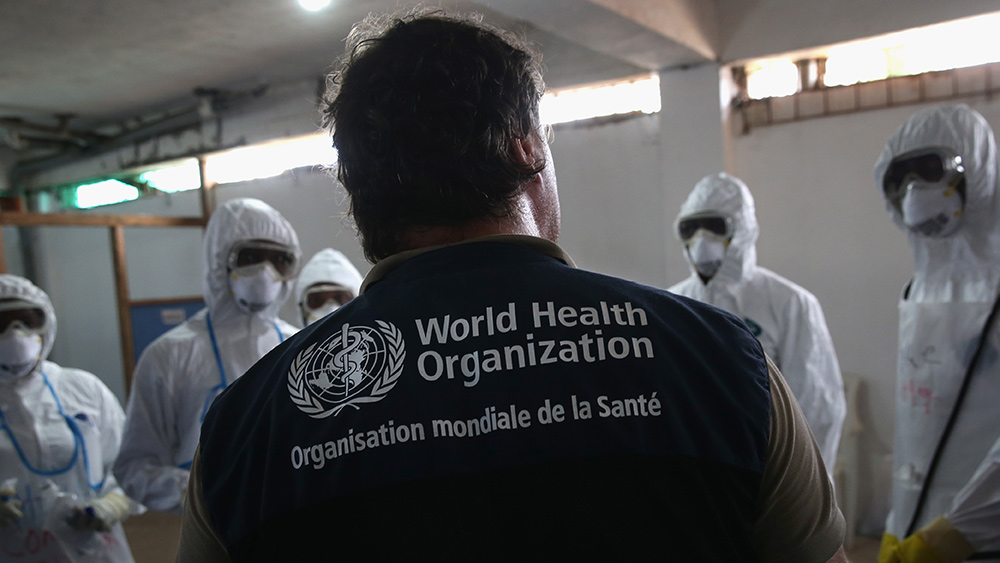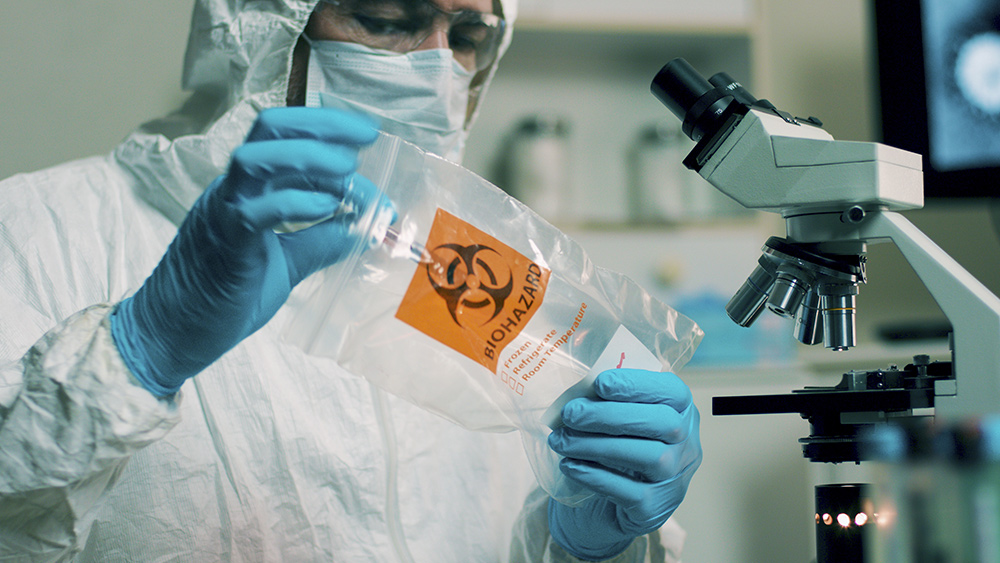After careful analysis, biomedical research scientist concludes that virology is a “fraudulent pseudoscience”
01/31/2024 / By Lance D Johnson

A published biomedical research scientist, who spent nearly a decade working in the field of virology, claims that virology has always been a “fraudulent pseudoscience.” In a newly published exposé, biomedical research scientist Simon Lee argues that virology is a “dying field” that has no roots in the scientific method.
“While most people regard virology as a bonafide hard science, it does not follow the scientific method and has its roots firmly in fraudulent pseudoscience,” he wrote.
The field of virology is not rooted in the scientific method
Simon Lee points out that the field of virology does not follow the scientific method. In the scientific method, one must first observe a natural phenomenon. Then, they must form a hypothesis using independent and dependent variables that can be tested against a proper control.
The prevailing belief of virology postulates that a foreign protein (a virion) attaches to a host cell, multiplies in the body and spreads to other hosts, including animals and humans. From the start, this natural phenomenon is presumed based on the observation of similar symptoms in more than one person. For example, a fever, cough, running nose, or rash in one person is often correlated as a viral infection that spreads from one person to the next based on the mere observation that similar symptoms occurred in another person. However, there are a multitude of causes for any of these symptoms, and there are many variables that can harm the underlying pathology of the cell.
By 1952, virologists were able to use electron microscopy; this was their chance to finally confirm that viruses were causing disease in humans. However, the suspected “viruses” were not observed directly in diseased tissue. The decomposition process that had previously been misinterpreted as “viral infection” also occurred in healthy animals, organs and tissue. For decades, virologists were unable to purify and isolate “virus” particles directly from diseased tissues, and their observations could not be reproduced by all scientists working with the alleged “viruses.”
Over the decades, virologists were able to suggest a hypothesis to explain the phenomenon, but they were unable to set up an experiment with an independent variable (the presumed cause) while also selecting dependent variables (the observed effects) in relation to an adequately-defined control.
When researchers are trying to determine the cause of an effect, scientific controls are used as a system of checks and balances. Proper controls allow researchers to study one factor at a time. A proper control ensures that the presumptive cause (independent variable) is the only thing that could be causing the observed effect (dependent variable.) For a proper experiment, both the control and the experimental groups must be exposed to the exact same conditions apart from the one variable that is being studied.
But these tenants of the scientific method were not followed when scientists put the cell culture method to the test in the 1950s. In 1954, scientists led by John Franklin Enders, attempted to grow the alleged “virus” particles in a cell culture because they could not properly isolate and purify them from a sick person. These cell culture experiments now form the basis of modern virology. Scientists were able to show structural changes of the host cell in vivo – mainly the breaking down of the membrane of a cell.
However, the cytopathic effect observed in the cell culture was only assumed to emanate from a virus. What they observed was a poisoned cell, leaving behind pieces of cellular debris. This cytopathic effect was used fraudulently as a dependent variable, even though it was never a naturally observed phenomenon; it was merely an artificial construct of a laboratory experiment.
To make matters worse, the scientists never isolated the independent variable (the “virus”) in order to establish a hypothesis that they could test. The cytopathic effect was also produced when there was no assumed “virus” in the culture medium, leading even John Franklin Enders to ultimately question whether his in vivo experiments were the gold standard that they were made out to be.
Regardless, this process of circular reasoning was the scientific precedent used to affirm the fraudulent field of modern virology.
Viruses are not the sole cause of disease and don’t always cause disease
Other scientists, such as Dr. Stefan Lanka, believe the cytopathic effect of so-called viruses could be the result of the way the culture experiment was conducted. He replicated the results of the “virus gold standard” using pure RNA from yeast. He also replicated the results by lowering the percentage of fetal calf serum, by using “minimal nutrient medium,” by tripling antibiotic exposure and by lowering the nutrients available for cell growth.
The cytopathic effect observed in the experiment is not a proper dependent variable for “proving” an infectious new virus. Cytopathic effects can also be observed for bacteria, amoeba, parasites, many different antibiotics, anti-fungals and chemical contaminants. Other factors include age of cells, nutrient stress, cell deterioration and environmental stress.
Likewise, according to the initial research study that “proved” the existence of a new SARS-COV-2 virus, researchers used a “mock virus” as the control. This “mock virus” was simply a doubling of the antibiotics used in the cell culture, which caused a cytopathic effect in 1 of 24 cultures. Because the control was not treated the same as the independent variables, the proof of a new SARS-CoV-2 virus was invalidated.
These examples alone warrant the re-evaluation of the entire field of virology. To better follow the scientific method, researchers should study the differences between healthy and unhealthy people, and consider all the factors that affect the cell. In this way, researchers can better understand the actual causes of sickness and disease, instead of falsely blaming sickness on causative agents that are not properly defined and isolated, nor proven to be the sole vector of disease.
Sources include:
RRC.uic.edu [PDF]
Submit a correction >>
Tagged Under:
cytopathic effects, disease causes, germ theory, health science, hypothesis, infections, infectious disease, outbreak, pandemic, Plague, rational, research, science deception, science fraud, science tyranny, scientific, skeptics, virology, Viruses
This article may contain statements that reflect the opinion of the author
RECENT NEWS & ARTICLES
COPYRIGHT © 2017 OUTBREAK NEWS



















